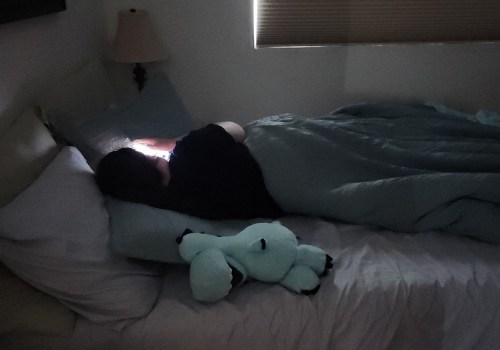Soon, when school resumes, parents will go from fighting over cell phones and video games to fighting over schoolwork, cell phones, and video games. We haven’t made this world ideal for ourselves, but it doesn’t have to be.
Reducing screen time can be considered a health intervention for developing brains. Smartphone use has been shown to disrupt sleep, and last year the U.S. surgeon general recommended for social media companies to include health warnings for kids.
With three adolescent boys living in my house—one is eleven years old, but he is frantically attempting to keep up with his brothers—I’ve learned how to limit their screen usage. These strategies need ongoing attention to detail and are not always effective. It feels worthwhile, though, as I watch one child working on his art projects, another making origami while he waits, and a third participating in not one, not two, but three different sports. Worth it, but exhausting.
People frequently purchase a router, configure their Wi-Fi, and then forget about it. However, when it comes to controlling screen time, parents should view the router as an untapped resource. The built-in capabilities of more recent routers enable the labeling and identification of each device that is logged in, including those that are provided by your internet provider. For instance, Spectrum, which I have previously used, allows you to inspect every device, match the device’s IP address in the router settings, and switch the wireless connection on and off whenever you want.
You can go above and beyond by setting up a wireless mesh network if your internet provider does not give this feature. These gadgets create a chokepoint for each connected device, extending the range of your Wi-Fi by establishing a second network with your router as the source. The companion app for the $100 Deco mesh network I use has a parental option that lets me group several devices under each child’s name and disable internet access to several devices at once.
Additionally, spend a moment changing the password while you are in the router’s settings. It’s a simple step that many people overlook but can help further secure your house, particularly if you have several smart devices using your Wi-Fi.
Dumb phones and feature phones are becoming more popular, but some of them can cost hundreds of dollars, and I would be devastated if I lost one. If one of my children lost one, I can’t even begin to comprehend how I would feel.
The oldest child, who is now fifteen, received my hand-me-down, first-generation iPhone SE, also called an OGSE, when it came time to give him a smartphone. It can’t download the newest programs and is little in his large hands. However, it has the ability to text, call, and use its browser to access the internet.
It was not his first phone; rather, it was a 4G Nokia 225 bar phone that came pre-installed with the mobile game Snake. We first used Mint Mobile to service it, and then we switched to RedPocket’s $10/GB monthly contract. Compared to just adding him to our family’s cell phone plan, this method required more work and might have been less economical. Calls occasionally failed to get through, and texts occasionally took an eternity to send. However, the intention was to train him to use the phone just to text and call us, and to utilize his incredibly slow browser to access the internet if absolutely required. We haven’t allowed him to move on from the fact that he lost it after only a year of use, despite the fact that it was only $50.
Indeed, almost a year after receiving an identical pre-owned Nokia, his younger brother likewise lost his phone. Since he is starting his first year of high school, our kids’ phones will soon end up in different hands. In order to meet the heightened expectations of his scholastic and athletic endeavors, the oldest child will receive my husband’s older, but later model phone, an iPhone XR, along with a somewhat larger phone plan. The middle child will receive the OGSE. Extending the data plan is a suitable move for him because he is a responsible person in most aspects of life, a diligent student, and an avid reader.
Regarding the youngest, I’ve already decided to buy him a brand-new, $50 feature phone. You may find these phones on eBay or on companies like umbwireless.com, which also provides service plans. The Reddit sr/dumbphones community offers useful advice for new users, and Jose Brioness has a thriving YouTube channel that covers everything related to so-called dumb phones if you’re interested in learning more.
Since my spouse and I own iPhones, we utilize Apple Screen Time. You may create a family across all Apple devices using Screen Time, and parents can impose limits on their children’s use. You can specify a time limit for using the app after restricted hours and make sure that an adult’s consent is required before downloading any new apps. Because of this shortcoming, I have my mesh network as a backup plan. For my needs, I do wish Screen Time allowed parents to establish exact times an individual app can be used, not just nighttime limits.
Family Safety on Microsoftis compatible with Windows PCs, Xbox consoles, and Android smartphones, just as Screen Time is compatible with Apple gadgets.As long as everyone has a Google account, Google Family Link can be accessed on both Android and Apple devices.
On their own platforms, all three are free, and parents can set time limits and restrict which apps their kids can download. However, certain app categories can be completely restricted for extended periods of time using Apple’s Screen Time feature. By utilizing a non-Edge browser or a non-Chrome browser that is blocked by Google Family Link or Microsoft Family, respectively, a youngster can circumvent web browsing restrictions.
Additionally, there is always the option to just take away the gadget if everything else fails.
Regretfully, cutting back on screen time is not a simple task. Children are clever at getting around rules, and I have far less control over the Chromebooks they get from school, which are now a necessary evil. It will also be necessary to regularly check your children’s behavior and habits in order to try to protect their mental health and online safety. Are they quietly hiding in their bedrooms? They are most likely sneaking, just like they did when they were toddlers, but this time they are using a school laptop or other gadget.
Nonetheless, there are alternatives for parents who are worried about the increasing barrage of unfavorable reports about their kids’ smartphone and internet use. In many ways, it requires more effort, but the benefits include safe, healthy kids and the opportunity to grow up without a gadget.












